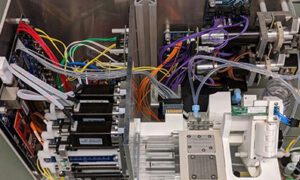Safety wearables have become increasingly popular in recent years, with more and more individuals turning to these devices for added protection and peace of mind. From smartwatches to panic buttons, there is a wide range of options available on the market. However, what are the actual benefits of using safety wearables? In this section, we will explore the advantages that these devices offer.
Benefits of Safety Wearables
1. Enhanced Personal Safety
One of the most obvious benefits of safety wearables is their ability to enhance personal safety. By wearing a device that can send out distress signals or track your location, you have an added layer of security in case of an emergency. This can be particularly useful for individuals who live alone or work in high-risk environments.
2. Real-time tracking and monitoring
Many safety wearables come equipped with GPS tracking capabilities, allowing friends or loved ones to monitor your whereabouts in real-time. This feature can be especially beneficial for parents who want to keep an eye on their children’s location or caregivers looking after elderly family members.
3. Quick Access to Emergency Services
In times of danger or crisis, every second counts. With safety wearables, help is just a button away. Most devices come equipped with a panic button that can be pressed to immediately alert emergency services and/or designated contacts. This quick access to assistance could potentially save lives in critical situations.
4. Discreet Protection
Unlike traditional forms of protection such as pepper spray or tasers, safety wearables are discreet and do not require any specialized training to use. This can be particularly useful for individuals who are not comfortable carrying or using weapons for self-defense.
5. Peace of mind
Knowing that you have a safety wearable on hand can provide a great sense of peace and security. Whether you’re walking home alone at night or engaging in outdoor activities, having a device that can send out alerts or track your location can offer reassurance and ease any worries.
6. Customizable Features
Safety wearables come with a variety of customizable features, allowing users to tailor their devices to fit their specific needs and preferences. From setting up emergency contacts to adjusting sensitivity levels, these devices offer a range of options for personalization.
7. Cost-Effective Solution
Compared to other forms of personal protection, such as hiring a bodyguard or investing in expensive surveillance systems, safety wearables are relatively affordable options. They also do not require any recurring costs, making them a cost-effective solution for long-term use.
8. Encourages Independence
For individuals with disabilities or health conditions that may limit their mobility or independence, safety wearables can be empowering tools that allow them to go about their daily lives with confidence and peace of mind. These devices provide an added layer of protection without restricting one’s freedom or mobility.
How to Choose the Right Safety Wearable for You
When it comes to staying safe and secure, having the right tools and technology can make all the difference. Safety wearables, such as smartwatches and panic buttons, have become increasingly popular as a way to enhance personal safety. However, with so many options available on the market, it can be overwhelming to choose the right safety wearable for you.
Here are some important factors to consider when selecting a safety wearable:
1. Identify your needs: The first step in choosing the right safety wearable is to identify your specific needs and concerns. Are you looking for a device that will track your location in case of an emergency? Or do you need something that will monitor your health and wellness on a daily basis? Understanding what features are most important to you will help narrow down your options.
2. Consider the type of functionality: Different types of safety wearables offer different functionalities. Smartwatches, for example, provide multiple features such as heart rate monitoring, GPS tracking, and even cell phone connectivity. Panic buttons, on the other hand, usually have one main function: alerting authorities or designated contacts in case of an emergency. Think about what level of functionality you require from a safety wearable.
3. Look at compatibility: When choosing a safety wearable, it is important to check if it is compatible with your existing devices, such as smartphones or tablets. Some wearables may only work with specific operating systems or require certain apps to fully function.
4. Consider design and comfort: Safety wearables come in various shapes, sizes, and designs. Some are worn as wristbands, while others can be clipped onto clothing or carried in a pocket. Consider which design suits your lifestyle and comfort level. For example, if you have an active lifestyle, a wearable that can be worn on your wrist may be more convenient.
5. Battery life: The battery life of a safety wearable is also an important factor to consider. Devices with longer battery life will require less frequent charging, making them more convenient to use.
6. Read reviews: Before making a purchase, it is always advisable to read reviews from other users who have experience with the product. This will give you insight into the performance and reliability of the safety wearable.
7. Cost: Safety wearables come at different price points, so it’s important to set a budget before starting your search. Keep in mind that higher-priced devices may offer more features and better quality, but there are also affordable options available.
8. Customer service and support: It’s always helpful to choose a safety wearable from a reputable company that offers good customer service and support in case you encounter any issues with your device.
The Future of Safety Wearables
While safety wearables have already made significant strides in improving the protection and well-being of individuals, their potential for the future is even more promising. With advancements in technology and increasing demand for safety measures, we can expect to see a wide range of innovative safety wearables in the coming years. Here are some possible developments that could shape the future of safety wearables.
1. Integration with Artificial Intelligence (AI)
As AI technology continues to develop, it has the potential to greatly enhance the capabilities of safety wearables. AI algorithms can analyze data from various sensors and provide real-time insights on potential dangers or threats. This could be particularly useful in high-risk professions such as construction or mining, where workers are constantly exposed to hazardous environments.
2. Improved Communication Features
Many current safety wearables already have basic communication features, such as emergency calling or text messaging. However, future advancements could allow for more advanced communication capabilities, such as two-way video calls or group messaging within a team of workers wearing similar devices. This would enable better coordination and quicker response times during emergencies.
3. Incorporation of Biometric Tracking
In addition to monitoring external factors like location and movement, safety wearables may also incorporate biometric tracking in the near future. This could include measuring vital signs such as heart rate, blood pressure, and oxygen levels to detect any physical distress or exhaustion among users. Such data can help employers identify potentially dangerous situations before they escalate.
4. Implementation of Virtual Reality (VR) and Augmented Reality (AR)
VR and AR technologies have the potential to revolutionize safety training by creating realistic simulations of hazardous situations. Safety wearables equipped with VR or AR capabilities could provide workers with hands-on experience in a safe environment, preparing them for potential dangers they may encounter on the job.
5. Enhanced Durability and Battery Life
One of the biggest challenges for safety wearables is ensuring their durability and longevity, especially in harsh environments. Future developments could focus on improving the materials used in these devices to make them more resistant to extreme temperatures, water, and impact. Additionally, advancements in battery technology could increase the lifespan of safety wearables, reducing the need for frequent charging or battery replacements.
6. Integration with Smart Home Technology
Many workplaces are now equipped with smart home technology, such as sensors and smart locks, that can detect potential hazards or improve security. In the future, safety wearables may be able to integrate with these systems to enhance workplace safety further. For example, if a worker enters a restricted area without proper authorization, their wearable device could trigger an alarm or send an alert to notify supervisors.
Conclusion
Safety wearables also allow us to stay connected with our loved ones, no matter where we are. With features like location tracking and instant messaging, we can easily keep them updated on our whereabouts and well-being. This is particularly useful for families with young children or elderly parents who may need extra care and attention.

































